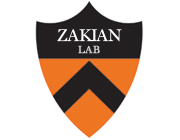Origin activation and formation of single-strand TG1-3 tails occur sequentially in late S phase on a yeast linear plasmid.
Publication Year
1993
Type
Journal Article
Abstract
In order to understand the mechanisms leading to the complete duplication of linear eukaryotic chromosomes, the temporal order of the events involved in replication of a 7.5-kb Saccharomyces cerevisiae linear plasmid called YLpFAT10 was determined. Two-dimensional agarose gel electrophoresis was used to map the position of the replication origin and the direction of replication fork movement through the plasmid. Replication began near the center of YLpFAT10 at the site in the 2 microns sequences that corresponds to the 2 microns origin of DNA replication. Replication forks proceeded bidirectionally from the origin to the ends of YLpFAT10. Thus, yeast telomeres do not themselves act as origins of DNA replication. The time of origin utilization on YLpFAT10 and on circular 2 microns DNA in the same cells was determined both by two-dimensional gel electrophoresis and by density transfer experiments. As expected, 2 microns DNA replicated in early S phase. However, replication of YLpFAT10 occurred in late S phase. Thus, the time of activation of the 2 microns origin depended upon its physical context. Density transfer experiments established that the acquisition of telomeric TG1-3 single-strand tails, a predicted intermediate in telomere replication, occurred immediately after the replication forks approached the ends of YLpFAT10. Thus, telomere replication may be the very last step in S phase.
Keywords
Journal
Mol Cell Biol
Volume
13
Issue
7
Pages
4057-65
Date Published
07/1993
ISSN Number
0270-7306
Alternate Journal
Mol. Cell. Biol.
PMID
8321213

